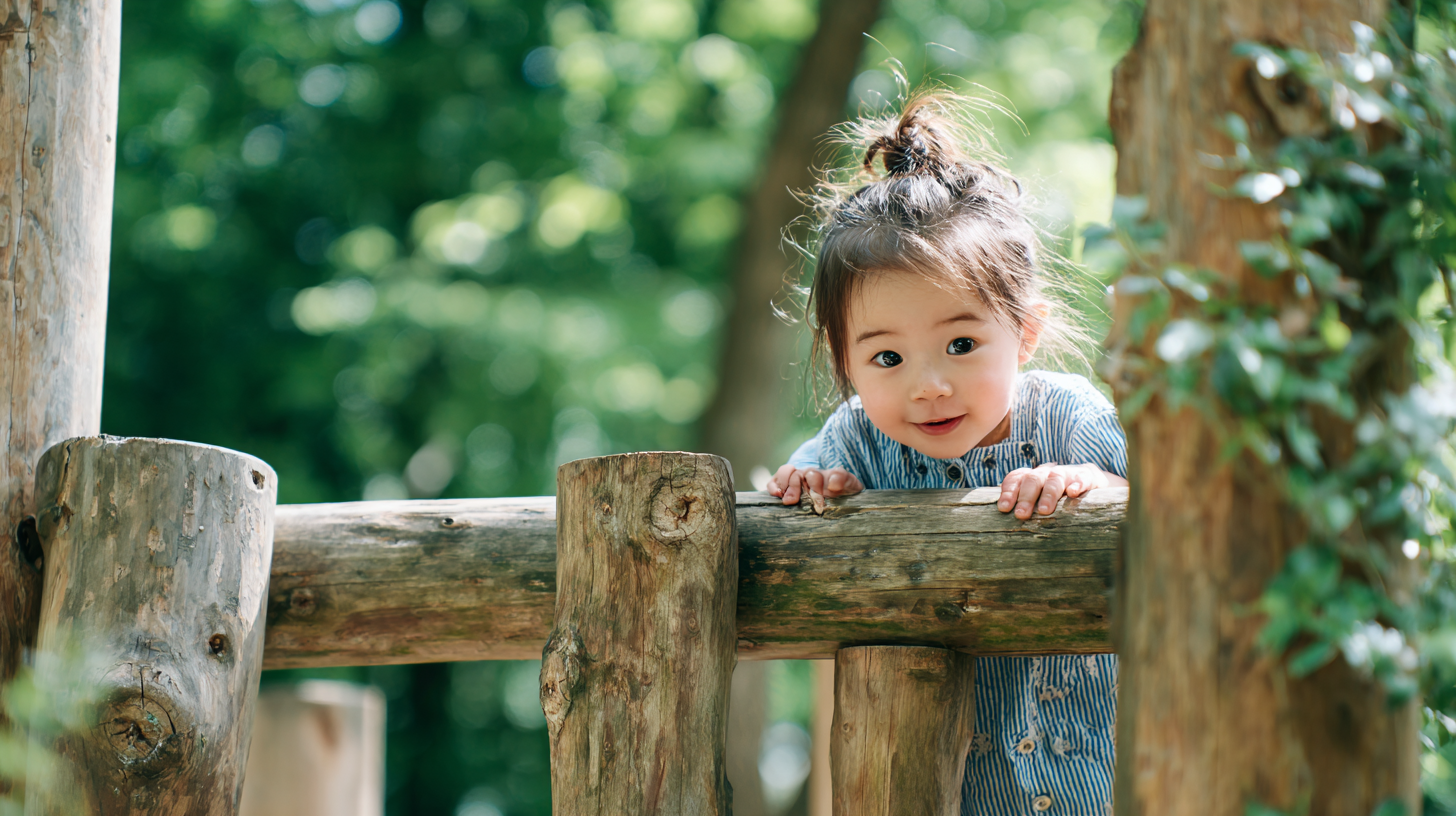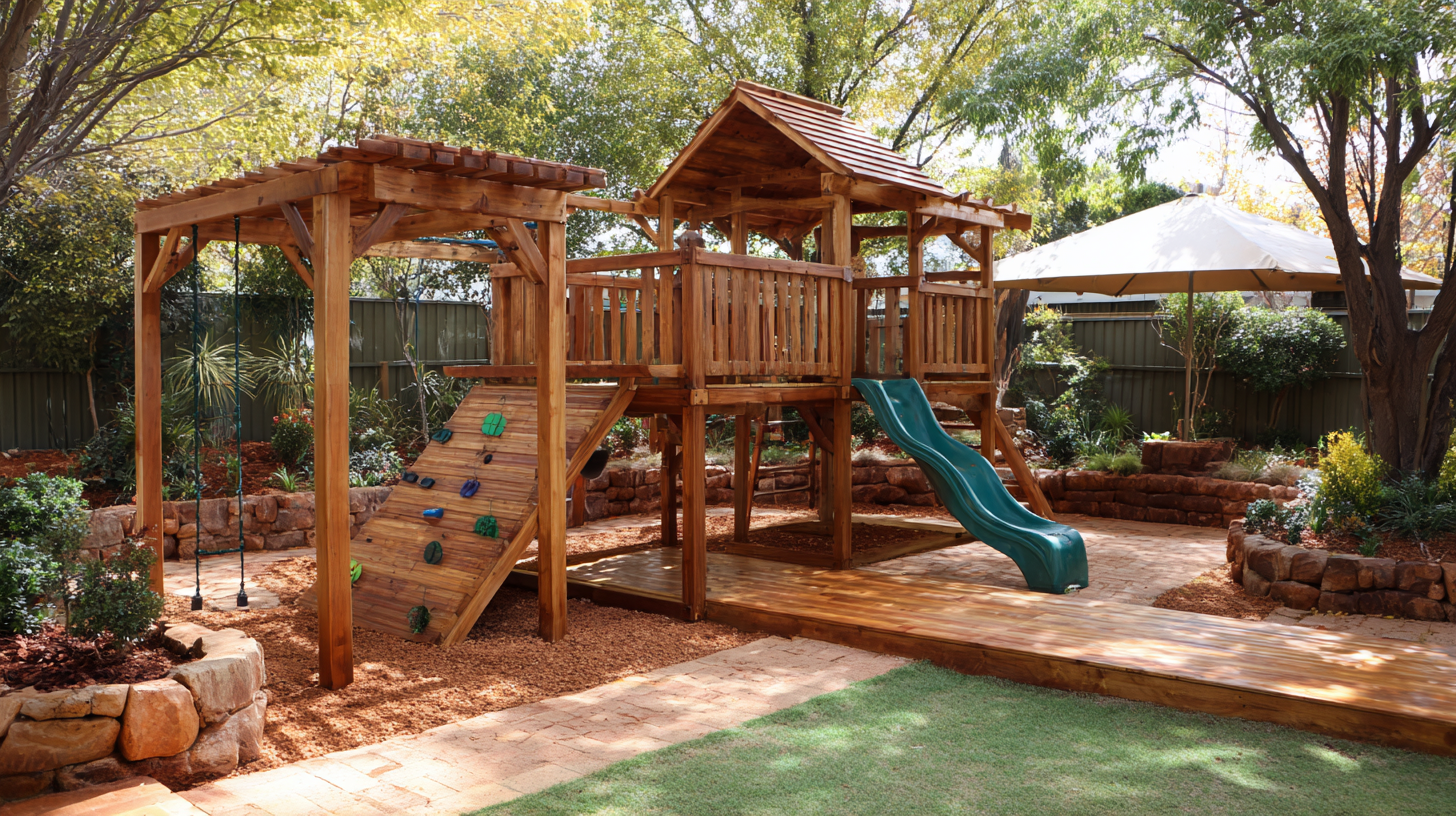 +86-13901441113
+86-13901441113




 Garden play is an essential component of childhood development, providing children with opportunities for physical, social, and cognitive growth. According to a report by the American Academy of Pediatrics, unstructured outdoor play can significantly enhance a child’s emotional well-being and foster essential skills such as problem-solving, creativity, and teamwork. Furthermore, the National Association for the Education of Young Children highlights that children engaging in garden play are more likely to develop fine and gross motor skills necessary for their overall physical fitness. As outdoor spaces equipped with appropriate play structures promote exploration and imaginative play, the need for quality garden play equipment becomes evident. This blog will explore the critical aspects that make exceptional garden play equipment vital to nurturing well-rounded development in children, bringing not only fun but foundational skills that last a lifetime.
Garden play is an essential component of childhood development, providing children with opportunities for physical, social, and cognitive growth. According to a report by the American Academy of Pediatrics, unstructured outdoor play can significantly enhance a child’s emotional well-being and foster essential skills such as problem-solving, creativity, and teamwork. Furthermore, the National Association for the Education of Young Children highlights that children engaging in garden play are more likely to develop fine and gross motor skills necessary for their overall physical fitness. As outdoor spaces equipped with appropriate play structures promote exploration and imaginative play, the need for quality garden play equipment becomes evident. This blog will explore the critical aspects that make exceptional garden play equipment vital to nurturing well-rounded development in children, bringing not only fun but foundational skills that last a lifetime.
When choosing garden play equipment for kids, safety should be a top priority. It’s essential to select equipment made from durable, non-toxic materials that can withstand the elements while ensuring that no sharp edges or small parts can pose a risk to little ones. Checking for safety certifications and age-appropriate ratings can help parents make informed decisions about what is suitable for their child’s developmental stage.
Another important factor to consider is the potential for physical and social development. Equipment that encourages climbing, balancing, and coordination fosters gross motor skills, while group activities can enhance social interactions and teamwork. Look for versatile play structures that offer various activities, allowing children to engage in imaginative play and explore their creativity. Ultimately, the right garden play equipment can transform an outdoor space into a nurturing environment that supports holistic child development.

Imaginative play is a fundamental aspect of child development, offering children the opportunity to explore their creativity and express themselves in a safe environment. Outdoor play equipment, such as forts, swings, and climbing structures, plays a pivotal role in facilitating this type of play. When children engage in imaginative scenarios—whether pretending to be pirates on a ship or explorers in a jungle—they stimulate their cognitive skills and enhance their problem-solving abilities. This hands-on engagement encourages them to think critically, promote social skills through collaborative play, and boosts their confidence as they navigate challenges.
Moreover, outdoor play equipment often inspires social interaction among peers, allowing children to negotiate roles, share ideas, and collaborate on various games and adventures. This interaction is crucial for developing essential communication skills and for understanding social dynamics. As children engage in role-playing, they learn empathy and gain a better understanding of others' perspectives, which are vital qualities for emotional growth. The physical nature of outdoor play also contributes to their overall well-being by promoting physical fitness, coordination, and resilience, making imaginative play through outdoor equipment not just a source of fun, but an essential component of healthy development.
| Equipment Type | Age Group | Developmental Benefits | Examples of Imaginative Play |
|---|---|---|---|
| Climbing Structures | 3-7 years | Improves physical strength, coordination, and risk assessment | Pretend as mountain climbers or explorers |
| Sand Pits | 2-6 years | Enhances sensory experiences and creativity | Building castles or discovering buried treasures |
| Water Play Stations | 3-8 years | Promotes social skills and teamwork | Creating rivers or managing a pirate ship |
| Ride-On Toys | 2-5 years | Encourages balance and gross motor development | Racing cars or delivering cargo |
| Pretend Play Equipment | 3-7 years | Fosters imagination, communication, and role play | Playing house or setting up a shop |
When considering the best garden play equipment for children, it's important to recognize how different types of play structures can significantly foster physical skills. Climbing frames, for instance, encourage children to develop strength and coordination as they navigate various heights and grips. Balancing on beams or ropes not only challenges their physical abilities but also enhances their balance and spatial awareness. These activities serve as a foundation for more complex motor skills, laying the groundwork for future athletic endeavors.
Slides and swings offer additional avenues for developing crucial physical skills. Sliding down a structure provides children with a thrilling experience while promoting core strength and flexibility as they learn to control their descent. Swings, on the other hand, aid in enhancing rhythm and timing as children push off and swing back and forth, engaging their abdominal and leg muscles. Together, these diverse play structures create an environment that not only entertains but also supports crucial physical development, equipping children with the skills they need to explore their world confidently.
When it comes to selecting garden play equipment, safety and durability stand out as paramount considerations for parents and educators alike. According to a report by the American Academy of Pediatrics, approximately 200,000 children receive treatment for injuries related to playground equipment each year. This statistic highlights the critical need for manufacturers to adhere to strict safety standards, ensuring that the materials used in play structures are not only safe but also robust. Equipment made from high-quality materials like treated wood and high-density polyethylene can better withstand the rigors of constant use, thus minimizing hazards.

Durability in play equipment extends beyond mere material choice; it encompasses thoughtful design and regular maintenance. The International Playground Equipment Manufacturers Association (IPEMA) emphasizes that well-designed equipment can significantly reduce maintenance needs while ensuring the longevity of the structures. For instance, equipment that features weather-resistant coatings not only stands up to the elements but also ensures that children can play safely over the years. Investing in durable, safe garden play equipment ultimately fosters a secure environment where children can develop crucial social and physical skills without the looming worry of injury.
Integrating nature into children's outdoor play spaces is essential for promoting their holistic development. Nature-based play areas, with their dynamic and organic elements, offer children opportunities to engage with their environment in meaningful ways. By incorporating features like natural climbing structures, sensory gardens, and open green spaces, we can encourage imaginative play, physical activity, and social interactions among children. Such environments not only spark creativity but also instill a sense of wonder, allowing children to learn about biodiversity, ecosystems, and the importance of caring for the planet.
Moreover, technology can play a pivotal role in bridging the gap between children and nature. Innovative tools and apps can enhance outdoor exploration, guiding kids as they interact with the natural world around them. For instance, interactive games that encourage children to identify local plant and animal species can provide an educational layer to their outdoor adventures. By fostering a love for nature through both play and technology, we can cultivate future stewards of the environment who appreciate the beauty and complexity of their surroundings.
This chart illustrates the significance of various developmental aspects associated with garden play equipment in children. The data shows how each dimension contributes uniquely to a child's overall growth.